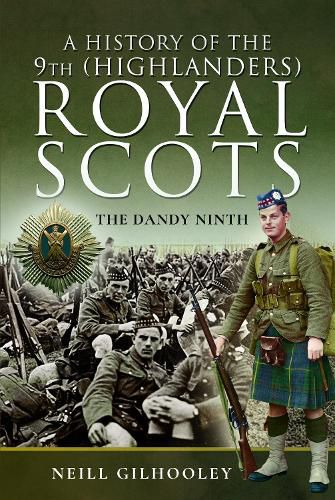Readings Newsletter
Become a Readings Member to make your shopping experience even easier.
Sign in or sign up for free!
You’re not far away from qualifying for FREE standard shipping within Australia
You’ve qualified for FREE standard shipping within Australia
The cart is loading…






Edinburgh is forever bound to The Royal Scots, the oldest regiment in the British Army and now part of The Royal Regiment of Scotland. For a period in the early twentieth century, it also had a Highland battalion, the kilted 9th Royal Scots, which became affectionately known as the Dandy Ninth. The battalion was formed in the aftermath of the Boer War's Black Week. It sent volunteers to South Africa and established itself as Edinburgh's kilted battalion, part of the Territorial Force. Mobilised in 1914 as part of the Lothian Brigade, they defended Edinburgh and environs from the threat of invasion, and constructed part of the landward defences around Liberton Tower. They were part-time soldiers and new recruits, drawn from the breadth of society but with a strong representation of lawyers, rugby players and artists such as the Scottish Colourist F.C.B. Cadell, and William Geissler of the Edinburgh School. A remarkably high proportion of the battalion received commissions and served in many branches of the armed forces, and in many theatres. In the Great War they mobilised to France and Flanders and served in many of the major actions: in Ypres in both the Second and Third (Passchendaele) Battles of Ypres as well as on the Somme 1916 at High Wood and the Ancre (Beaumont Hamel), at Arras 1917 (Vimy Ridge); at Cambrai 1917 (Fontaine); and during the 1918 German Spring Offensive at St Quentin and at the Battle of Soissonais-Ourcq. They were with the 15th (Scottish) Division in the Advance to Victory. Some 6,000 men passed through the ranks of the Dandy Ninth and over a thousand never returned. AUTHOR: Neill Gilhooley was born in Edinburgh. He worked overseas as a project engineer in the oil and gas industries and now lives in Nottingham with his wife and two children. His interest in the 9th Royal Scots was aroused by his grandmother's stories of her father's service in the battalion, including a vivid memory of him coming home on leave and running the naked flame of a candle up the pleats of his kilt to rid it of lice and their eggs. He has compiled a half million word index of the personnel of the battalion. 20 colour, 80 b/w illustrations, 25 maps, 1 diagram, 5 graphs
$9.00 standard shipping within Australia
FREE standard shipping within Australia for orders over $100.00
Express & International shipping calculated at checkout
Edinburgh is forever bound to The Royal Scots, the oldest regiment in the British Army and now part of The Royal Regiment of Scotland. For a period in the early twentieth century, it also had a Highland battalion, the kilted 9th Royal Scots, which became affectionately known as the Dandy Ninth. The battalion was formed in the aftermath of the Boer War's Black Week. It sent volunteers to South Africa and established itself as Edinburgh's kilted battalion, part of the Territorial Force. Mobilised in 1914 as part of the Lothian Brigade, they defended Edinburgh and environs from the threat of invasion, and constructed part of the landward defences around Liberton Tower. They were part-time soldiers and new recruits, drawn from the breadth of society but with a strong representation of lawyers, rugby players and artists such as the Scottish Colourist F.C.B. Cadell, and William Geissler of the Edinburgh School. A remarkably high proportion of the battalion received commissions and served in many branches of the armed forces, and in many theatres. In the Great War they mobilised to France and Flanders and served in many of the major actions: in Ypres in both the Second and Third (Passchendaele) Battles of Ypres as well as on the Somme 1916 at High Wood and the Ancre (Beaumont Hamel), at Arras 1917 (Vimy Ridge); at Cambrai 1917 (Fontaine); and during the 1918 German Spring Offensive at St Quentin and at the Battle of Soissonais-Ourcq. They were with the 15th (Scottish) Division in the Advance to Victory. Some 6,000 men passed through the ranks of the Dandy Ninth and over a thousand never returned. AUTHOR: Neill Gilhooley was born in Edinburgh. He worked overseas as a project engineer in the oil and gas industries and now lives in Nottingham with his wife and two children. His interest in the 9th Royal Scots was aroused by his grandmother's stories of her father's service in the battalion, including a vivid memory of him coming home on leave and running the naked flame of a candle up the pleats of his kilt to rid it of lice and their eggs. He has compiled a half million word index of the personnel of the battalion. 20 colour, 80 b/w illustrations, 25 maps, 1 diagram, 5 graphs